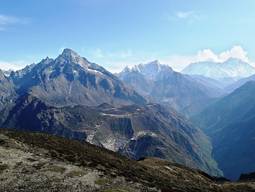Natural World Heritage Sites
The Office works in close collaboration with the Department of National Parks and Wildlife Conservation (DNPWC) to build awareness among national authorities and affected communities in and around the two Natural World Heritage Sites Chitwan and Sagarmatha, with the objective to improve management and conservation of the two sites.
Chitwan National Park
In collaboration with the IUCN (World Conservation Union) Nepal and DNPWC, a fact-finding mission to Chitwan pre-assessed the scale of infrastructure projects, which would have major indirect and direct impact on the Outstanding Universal Value of the site.
The Office has supported a pilot project which aimed at strengthening community based anti-poaching and human wildlife conflict mitigation, by using mass media and local radio channels in the buffer zones surrounding the Chitwan National Park. The project was implemented by the Biodiversity Conservation Centre and National Trust for Nature Conservation.
Click for photographs
Sagarmatha National Park
An advisory mission to the Sagarmatha National Park was made in May 2016 to provide technical advice on the overall state of conservation of the property.
In collaboration with the IUCN Nepal and DNPWC, the UNESCO:
- Requested the State Party to submit copies of revised Sagarmatha National Park Tourism and Management Plan for 2016-2020 for review by the World Heritage Centre and IUCN; and
- Encourages the State Party to submit a minor boundary modification to formally recognize the existing Buffer Zone of Sagarmatha National Park as a buffer zone to the property consistent with the Operational Guidelines.
Click for photographs.


